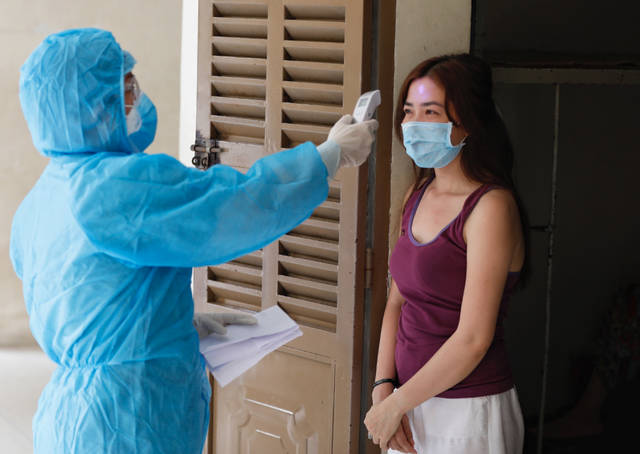 Opinion
Opinion


|
| Isolating COVID-19 patients at home helps to reduce pressure for health establishments. — Photo giadinh.net.vn |
HCM City is the first locality in Việt Nam to pilot a new scheme allowing asymptomatic COVID-19 patients to quarantine at home. In a recent interview with the Việt Nam Government Portal, Doctor Trương Hữu Khanh, Head of HCM City’s Paediatrics Hospital No 1’s Infectious and Nervous Diseases Department talks about the scheme amid increasing cases of COVID-19 in HCM City.
In this context, how does the new scheme help to reduce the workload at health establishments?
The health system is being overwhelmed and it could lead to negative consequences. If there are too many patients, we may fail to ensure proper care for all of them and this may make some cases become more severe. Meanwhile we also have to focus our resources on the most severe cases. Allowing us to reduce our workloads by allowing isolation at home is a feasible solution.
What needs to be prepared for home isolation?
When this scheme is implemented, there will be two trends. On the one hand, some may fear that the patient may infect family members and this leads to extreme anxiety. Meanwhile others may be too comfortable and fail to take precautions for their family and the community.
It is necessary to give them specific instructions including isolation guidelines, health care, nutrition and the ability to maintain 5K measures at home (wearing facemask, having disinfection, maintaining distance, avoiding gathering and completing health declarations).
If well prepared, I believe isolation at home is a feasible and effective solution. By doing so, the health sector can focus its human resources on vaccination.
What should be taken into account when one quarantines at home?
There are two notable issues. One is to ensure safety and avoid transmission in the community. We can see from the experience from the world and in Việt Nam, with tens of thousands of infections, that young people who are not obese and have no underlying health conditions almost have no severe symptoms when infected with COVID-19. These patients should have treatment duration shortened and be allowed to quarantine at home. They would be more comfortable at home and be able to eat what they want.
Secondly, people without severe symptoms will begin to recover after eight days. By that time, they should be tested to see if the viral load has decreased and allowed to quarantine at home if applicable.
What is the risk of infection to the community from people isolating at home?
If the instructions are strictly followed which include not leaving the house, not coming into contact with people outside, then there is almost no chance they will infect others. There is a risk of infection when patients have direct contacts with others or they share a narrow space, especially in an air-conditioned environment.
Therefore if the patients strictly follow instructions including living in a separate room, keeping a distance, wearing a face shield, and using separate personal items, there won’t be any infections.
Some people may be concerned about having an infected neighbour quarantine at home and COVID-19 patients may face social stigma. It is necessary to help people understand the infection mechanism as I said. If COVID-19 patients stay at home and don’t have contacts with the outside then they won’t infect others.
Isolation at home is not complicated at all and there is a huge demand for this in the context of an increasing number of infections.
Many people wonder why there is no need to give prescriptions for asymptomatic patients. Could you explain this?
Many people test positive for COVID-19 and recover on their own and they don't even know they are infected. That means they don't take drugs and don't need treatment.
Asymptomatic patients who are allowed to be isolated at home do not need to take any special medicine. They need to pay attention to having sufficient nutrition, fresh fruits, and drinking lots of water, or taking Vitamin C. If symptoms develop, they usually have fever, cough, and runny nose. For these symptoms they can use antipyretics. Asymptomatic patients who quarantine at isolation facilities don’t need to take any special medicine either. They just need to monitor their health and ensure they don’t spread the virus to the community.
Some people are gargling with too much salt water. Overuse will cause a sore throat, which can be mistaken with a symptom of COVID-19 infection. Overuse of salt also leads to diseases including high blood pressure and headaches. So it is necessary to use it properly.
What should be taken into account when we take care of patients quarantining at home?
Those isolating at home need to have proper eating and personal hygiene. They can become seriously ill if they are attacked by common bacteria and viruses. Therefore, it is necessary to eat clean, have a well-ventilated house and wash hands frequently.
The time of finishing quarantine depends on the testing result. If they do not have any symptoms, there is no need to test many times. They can test on the 14th day and continue to self monitor and have another test on the 21st day. If the tests are negative, they can return to their normal. — VNS